Media | Articles
5 Fun Fords Under $40K
Earlier this month, Kelley Blue Book reported that the average price of a new car in December of 2024 was $49,740. Thankfully, there are a lot of cool classic cars you can get for far less than that—and you don’t have to settle, either. If you choose one from this list of Fords, you’ll be getting a vehicle that could win a local car show.
No, we don’t have a crystal ball or a phone tap on your local car show organizers. What we do have is lots of data on how much particular cars are worth in certain conditions. For this piece, we chose only vehicles whose #2 values are below $40,000. (As you may know, we calculate condition on a scale of 1 to 4. #1 is museum-quality, #2 is Excellent, and #3 is a nice driver.) We decided to focus on Fords, because the manufacturer’s galaxy of models is so broad that, even if we only probed that brand, we could enjoy an expedition—nay, an excursion—into an array of SHO-stopping models without flex-ing the contours of our search or being accused of capri-ciousness.
Without further ado, here are five Fords with #2 values under $40,000. These aren’t the only cars that fit the criteria, so if you don’t find what you’re looking for here, or if you want to check the price of another Ford you’ve wanted for a long time, check out our easily searchable, digital Price Guide.
Marketplace
Buy and sell classics with confidence
1965 Galaxie 500 LTD Sedan (Interceptor)

#2 Condition Value: $39,900
If you’re well versed in the ’65 Galaxie, overhauled for that year along with the rest of Ford’s lineup, you’ll know that the top-dog engine was the 427, with 425 hp. You’ll also know that those are six-figure cars today. Enter the 390—specifically, the police-spec, Interceptor version, with 330 hp and a four-barrel carburetor. Ford offered the engine in all four body styles—convertible, hardtop coupe, hardtop sedan, and the sedan above—and the last is the most affordable.
You don’t have to give up comfort for power, either. The “LTD” indicates “an all-new kind of Ford with luxury totally new to Ford’s field,” according to a period brochure. The four-door models boasted Silent-Flo Ventilation, which “sweeps in fresh air” via the front air vents, changing it “several times each minute.” Other niceties “of far more expensive” cars include a Swing-Away Wheel (only if you ordered power steering), dual speakers in the rear seats, whose passengers also enjoy an armrest and cut-pile carpeting.
1931 Model A Deluxe Roadster
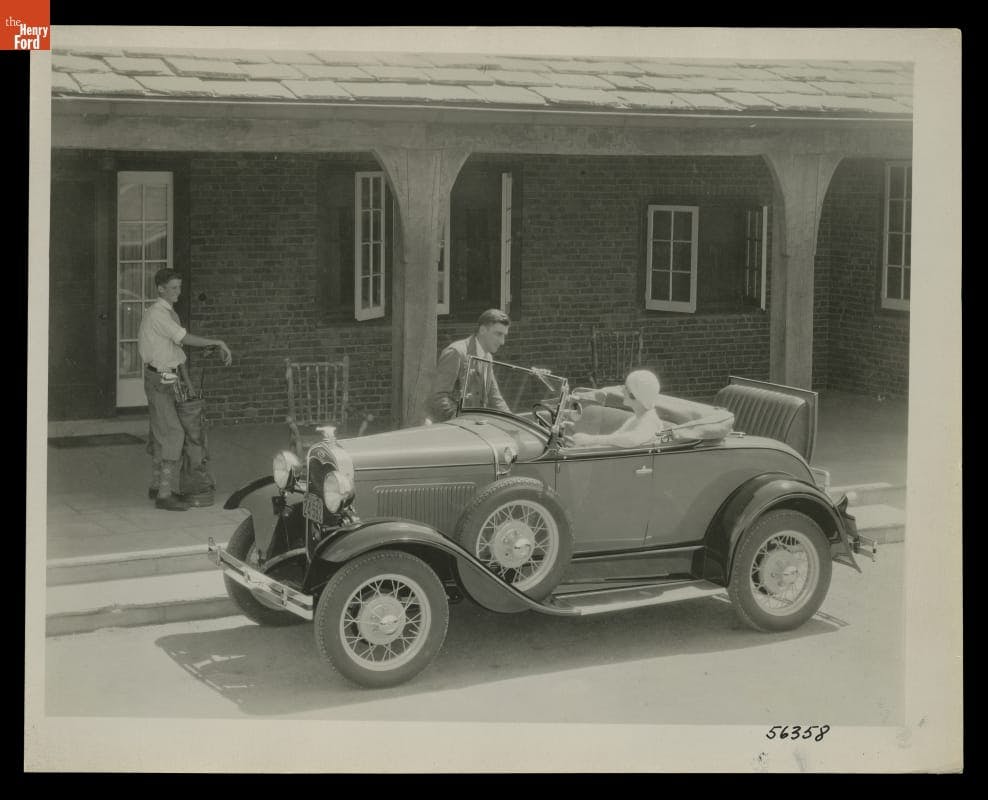
#2 Condition Value: $32,300 (convertible)
The first car to wear the blue oval, the Model A (1927–32) is considerably more approachable than its predecessor, the Model T—especially if you are new to prewar cars. Longer and lower than the T, the Model A looks legitimately modern compared to the T. It was: The A had an electric starter, drum brakes (versus a transmission brake), and a three-speed transmission. Today, resources are plentiful, whether you’re seeking advice or parts.
Ford made millions, in a plethora of body styles. The later As (’30 and ’31) are generally more desirable, with superior fit and finish and better options, including a rumble seat. We recommend the Deluxe trim, distinguishable by its woodgrain interior trim, cowl lights, and a pinstripe on the gas tank (also the dashboard!). Some configurations of the Deluxe also had a rear window that could be rolled down; on cars equipped with a rumble seat, the window allowed passengers in the cabin to chat with those in the rumble seat. While the photo above is of a Deluxe roadster, the coupe (same year, same trim) is another affordable option, at $29,500.
Curious? Check out our Model A buyer’s guide.
1979 F-Series Indianapolis Speedway Official Truck Package

#2 Condition Value: $38,000
Halfway through the final year of the sixth-generation F-Series, which debuted for 1973, Ford decided its Mustang Pace Car replicas were lonely, and needed a pickup-truck companion. Okay, just kidding.
In the ’70s, GM was on a roll supplying pace cars to the Indy 500, and GMC supplied the support trucks. In 1974, someone had the brilliant idea to build a limited edition to honor the “official trucks” of the Indy 500. In 1979, when a Mustang finally broke the string of GM pace cars (1972–1978), Ford got to supply the trucks, which meant it could promote its own special-edition truck. It even made 367 commemorative wreckers!
Just under 6000 F-150s were ordered with the Indianapolis Speedway Official Truck Package. For dealers, the process was simple—they just put the decals on the trucks—but the customers had to carefully order the right sort of truck. The “Official Truck” package was available on any F-100, F-150, or F-250, both short or long wheelbase, as long as you ordered a regular cab. From there, you had to specify the Ranger trim, silver metallic paint, and a specific set of wheels, depending on which truck you started with—for the F-150, ten-hole forged aluminum ones with the all-terrain tires. The only interior choice was silver-black vinyl. Some options were not available on Official Truck look-alikes: No rear chrome bumpers, no Tu-Tone paint, no chrome grille, no tool storage box.

2003–04 Mustang SVT Cobra

#2 Condition Value: $34,300 (coupe); $37,400 (convertible)
The final Mustang to use a chassis derived from the Fox platform, the SN95 generation was produced from 1993 through 2004. After the “New Edge” facelift in 1999, Ford’s Special Vehicle Engineering team came out with a new version of the Cobra that upped the ante with several updates, including independent rear suspension and a 320-horse DOHC modular V-8. In 2003, Ford debuted the supercharged “Terminator” Cobra, with 390 hp and 390 lb-ft of torque. Ford’s SVT built each 4.6-liter, DOHC V-8 by hand, starting with a cast-iron block topped with four-valve aluminum heads and crowned by a Roots-type supercharger from Eaton that compressed incoming air to eight PSI. The crankshaft was forged steel, with forged “H-beam” connecting rods and forged aluminum pistons. The engine was backed by a six-speed manual transmission (regular SN95 Mustangs made do with a five-speed) and an aluminum driveshaft.
With revised rear suspension geometry, a set of Bilstein monotube dampers, and a brace of new bushings throughout, and of course that monster of an engine, the 2003-04 SVT Cobra is a lot of fury for less than $40K—and that’s for the pricier convertible. If you don’t have to drop the top, you can spend as little as $34,300 for a #2 condition coupe. The only higher rung in the SN95 hierarchy is the Mustang Cobra R, a lightweight, street-legal racing model of which SVT only made 300. For those who love the exploits of Ford’s Special Vehicle Team, this Cobra is something to show off with pride.
1987–91 Bronco Eddie Bauer

#2 Condition Value: $32,800
While we were tempted to pick one of the special editions from 1991, the Nite or the Silver Anniversary, their rarity makes them hard to find, so we settled on the more accessible models from this generation. Built from 1987 through 1991, this Bronco is known as the “brick nose” version, despite the fact that the whole truck wore softer contours than its boxy ’80s brother (known as the “bull nose” model).
The fourth-gen Bronco came in three trims—Custom (the base trim), XLT (the volume-seller), and Eddie Bauer. We favor the Eddie Bauer trim, with the 351 V-8, partly because of its standard deep-dish aluminum wheels, and partly for these lines in the brochure: “Hit your favorite trout stream at dawn. Then pull up to the Club on Saturday night. The Bronco Eddie Bauer is never out of place.” Who needs an F-150 Raptor, anyway?
This bougiest of brick-nose Broncos came with power steering, automatic front locking hubs, power brakes, a 32-gallon fuel tank, heavy-duty gas shock absorbers, and a front stabilizer bar. Inside you got the nicer chairs, upholstered in tan cloth and embroidered with the most adorable little trees, carpeted floor mats stitched with the Eddie Bauer logo, and a tilting steering wheel.
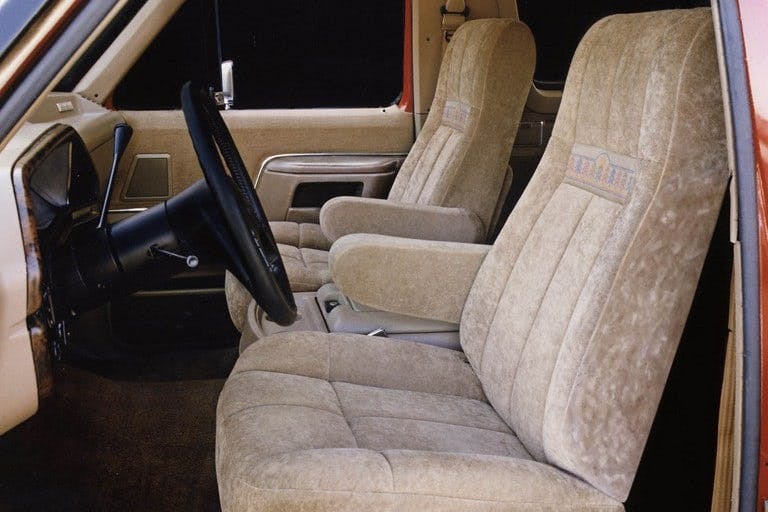

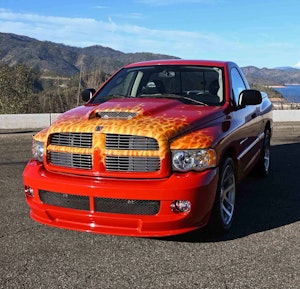
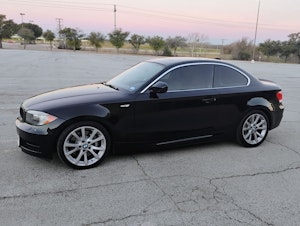
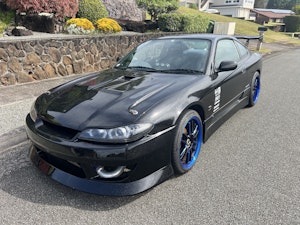
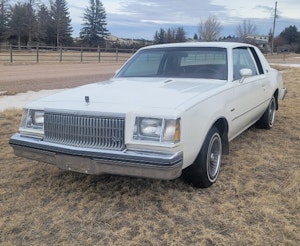
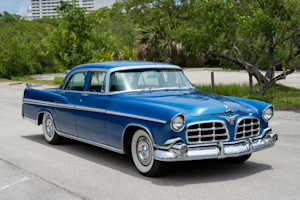
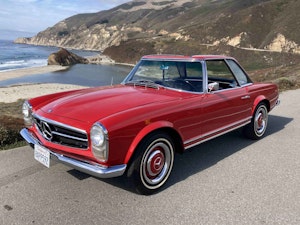
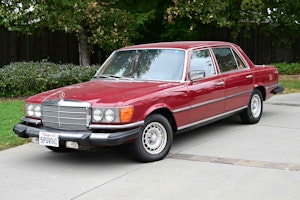
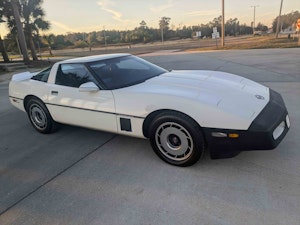










In a 65 or thereabouts Galaxy the 390 is the engine to have. The 427 is worth considerably more and has that when you pop the hood appeal but they are a bit temperamental. So much so Ford dealers were told to dissuade buyers from checking that option box at the time. Initially it was really meant to go racing against the 421 Super Duties being back doored out by Pontiac. The 390 had enough punch for the ‘atomic family ‘ buyers and a more user friendly option. ‘ You just can’t kill those motors’. With a 40k spending limit I’d be looking for a 71 with the 390 or possibly a 429 to put an intake on and bring it up to the forgotten ‘Thunder Jet’ spec. A Gator McKlusky White Lightning special. Same color but a two door. – ” There are only two things that scary me. Women and the police”
I think the New Generation Thunderbird should be on the list. There are many enjoyable rides left in this upcoming collectible by Ford.
Yes, We love our Black on Black 2002. This is our second one.
Yep – they are as cool as can be – more so perhaps than even than the 1955-57, to this Baby Boomer.
The list started off slow but got better by the end. The Mustangs at the end are my favorites here.
Nice article! Love that generation of Mustangs just after turn of the century. Had a Bronco Eddie Bauer and boy was it plush!
I want to play cards with anybody who would pay forty grand for a 390-powered ’65 Ford four-door.
Not until I sold them a bridge located in Brooklyn.
I know, right? That is straight ludicrous. I want to see the sales examples to back up that claim. But now, watch Facebook marketplace be flooded with garbage-condition 4 door Galaxys for $30k plus. No one will buy them, and dollar-sign-addled sellers will be left scratching their heads wondering why no one is scooping up their “can’t miss” investments….
Makes me think my 95K, full sized 66 Mercury Breezeway Sedan/428 V8 is worth $50K…Right?
I am out of money. I just bought a bridge in Brooklyn
What non-car folks don’t understand is there are 2 values. The book value and the true resale value. Rarely do cars routinely sell at book value. On top of that is the price differential between different areas. Where you might get a better price for a rag top in San Francisco, California not so much in Bangor, Maine. Watched a 1966 Charger rust into the ground that was in a field in Upstate NY back in the late 80’s. You could buy it, for the right price, which was comparable to a concours condition Charger, always with the caveat “I know what it’s worth”. Long story short, he passed away and his son had the now completely rusted out Charger that sat in the field sunk up to its frame in the mud for 20+ years towed away by the local junkyard. Talked to the junkyard owner years later and he told me there was nothing salvageable and it went straight to the crusher. Sad reality. Lost alot of potential deals of killer projects over car owners way over pricing their vehicles by comparing their hoopty to the price #1 cars are getting.
Not just this car. To me 4=doors in general aren’t worth that much. Whenever I see on at a car show, I’m like,
“but, it’s a 4-door.”
That’s what they used to say about station wagons. Try and find a cheep wagon now!
I think that’s because most of them got crunched when nobody wanted them.
I agree, but they seem to be making inroads – perhaps due to the often-high price of two-door versions of certain cars.
Right on!!
I’m with you brother. When the question is asked, “and what’s wrong with that one” my answer is “it’s got too many doors”…
Agreed
Interesting read. You got it mostly right on the Model A but the price “has fallen out the bottom” as some say. For example I just purchased a 31 deluxe coup with a fresh restore that is as close to being a #1 as you can get. (I had a bunch Model A folks drooling over it and all they could find was a few missing nails I the “hide a nail” seam on the roof and the non original headlights for 15K. There are deals out there to be had. https://www.icloud.com/sharedalbum/#B2WGqkRUiGPxOCz
That’s still pretty close to $22000 for a deluxe roadster with the premium over the coupe, and yes, there ARE bargains to be found, depending where you are. There are also a lot of “pigs with lipstick” passing for “restored” that look fantastic but still need another 5 or 10 thousand to make them “drivers”
The 390 was slow in anything. I had a ’66 Fairlane GT(390 4 speed) as a company car in high school. I went to the used car lot every afternoon to do what we now call detailing, and this was my reward? This was spring of 1967 an it had 10,000 miles on it, already traded in on a 396 Chevelle at the Chev. Olds dealer I started work at that July in Parts. Still worked evenings and Saturday at the used car lot, but got a ’61 Impala as my demo which was twice as faster even with a slip and slide Powerglide . The Fairlane finally sold in October and was the last Ford “performance” car they ever stuck on the lot.
It was a nice looking car and had a nice interior but my bicycle was faster.
C Duster, I’m not saying the comment was biased against Ford or anything, but anyone with two functioning grey matter cells to say a bicycle was faster than anything with a 390GT- 4 speed knows the issue there was the driver.
bore it 60 over add 427 crank and rods,high rise intake w/ holly 750 and headers, solid lifter comp cam shaft 326 duration 510 lift 750 Holley carburetor, performance coil, and make sure you balance upper and lower ends. Then drive it and tell me what you think.
There’s something seriously wrong here. I had a ’63 Fairlane 500 wagon with a 260 V8 and automatic transmission. I had that up to 105 mph once, and you’re claiming that a later model sedan with a bigger engine was slow? I disbelieve you.
I am guessing (but not certain) that he meant acceleration, as versus top speed.
In 1973, I beat a Z28 in light to light drag. Two blocks on Ponce de Leon in Atlanta. Every time he shifted, he dropped back about ten feet and that Fordomatic two-speed didn’t shift at all.
Of course, the clutches tended to grab a bit after that.
I find that hard to believe… Unless personal experience is limited to 2bbl and highway geared models… Take seems bogus to me.
The proletariat versions of the FE engines are all boat anchors. Personal experience:
’58 Skyliner 332 4bbl
’58 Skyliner 352 4bbl then upgraded to 390 4bbl
’61 Thunderbird 390 4bbl
’63 Sunliner 352 2bbl
None of these cars could touch the Chevy 348 W or the Plymouth 383 B engines in similar tune.
To put an exclamation point on it, Compare the top tune 1959 FE to the top tune 348 W. But…. then there is that reliability thing going for the FE.
As far as I know, all Broncos from 78-on had power steering. It’s also funny that the article says the EB came with standard aluminum wheels, when the pic clearly shows steel ones. They did a good job of trying to make the look alloy though.
Believe it or not, there was a standard manual steering box in ’78. Super rare but they do exist. Ford wisely made power steering standard in ’79.
87-90 Eddie Bauers had the styled argent steel wheels. The 91s got the aluminum alloys as standard.
I used to sell those Eddie Bauer versions in 1988 not sure about this article
No such thing as an F200 as called out on the text about the ’79 Indy Pace Truck.
That’s for sure, thank you for pointing out the error!
I’m pretty sure that, in today’s post-COVID market, one can find a #2 condition 1st gen Lightning (’93-’95) for at or under $40K. Lots to love with the early Lightnings for the money.
All seem kind of high to me, but ALL prices have been outrageous the last few years. The 65 Ford reminds me of Andy Griffith show. Fairlane looked better and was lighter. Could still get the FE’s. Prefer Windsors as they were lighter though less powerful specs. Never was a fan of FE boat anchors.
The 31, no more discussion.
“31”…what?
Relatively sure he means the Model A Ford.
I once street raced a 67 Fairlane 390 auto with my first car in 1970 a 67 Nova SS 327 4 speed & beat him handily.
The Fairlane with a 4 speed would have beat you top end!
2012 -13 S197 Boss 302 or 2010-12 GT500 would be tons of fun under 40k.
Agreed! I paid far less than $40K for my ’12 Boss and it’s a ton of fun.
YESSSS and its still new enough to make it your daily driver (in dry weather at least) if you wanted to, Great choice!
The Model A, but your price is way too high…
Yep. I sold my completely restored 31 deluxe roadster for 24K last year. That’s the most I could get for it.